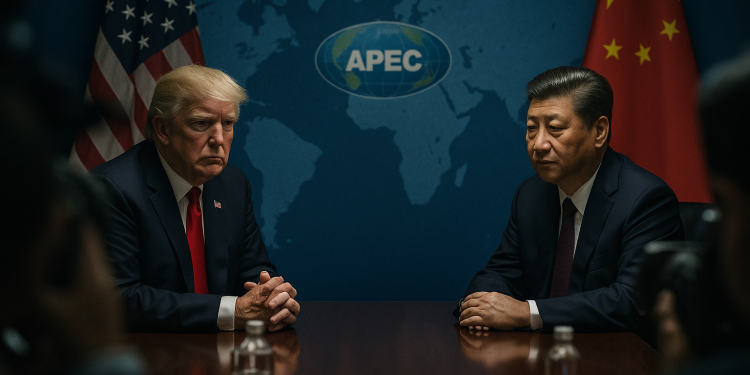US President Donald Trump and Chinese President Xi Jinping will meet next Thursday during the Asia-Pacific Economic Cooperation summit in Gyeongju, South Korea, the White House confirmed on Thursday.
The scheduled meeting marks a pivotal moment in efforts to defuse escalating trade tensions between the world’s two economic superpowers.
The high-stakes encounter, scheduled for October 30 on the sidelines of the APEC leaders’ meeting that runs from October 31 to November 1, represents the first in-person meeting between the two leaders since Trump returned to office in January.
US-China trade war and threats to global economic stability
Recent weeks have witnessed a sharp deterioration in US-China relations following Beijing’s October 9 announcement of sweeping export controls on rare earth elements and refining technologies.
China controls approximately 70 percent of global rare earth mining and 90 percent of processing capacity, giving it extraordinary leverage over industries ranging from semiconductors to electric vehicles.
The new restrictions require foreign entities to obtain Chinese government approval to export products containing even trace amounts of rare earth materials or manufactured using Chinese technology, with full implementation scheduled for November and December.
Trump responded forcefully on October 10 by threatening an additional 100 percent tariff on Chinese goods effective November 1, layered atop existing duties that already place Chinese imports at a minimum 30 percent tariff rate.
The US President also warned of potential export controls on “any and all critical software” to China, while expanding restrictions on aircraft components.
This latest confrontation follows Trump’s universal 10 percent tariff enacted on April 5 under the International Emergency Economic Powers Act and a 25 percent tariff on imported medium- and heavy-duty trucks announced on October 17.
Divergent perspectives cloud negotiation prospects
Even with tensions running high, Trump keeps bouncing between tough talk and upbeat promises about striking a big deal with China.
“I think we’re going to end up having a fantastic deal with China, fantastic for both countries and for the entire world,” he said Tuesday.
But in the same breath, he warned that he’ll slap on a 100% tariff if talks fall apart.
A day later, he told reporters he expects to negotiate “everything,” soybeans, nuclear disarmament, maybe even an end to the war in Ukraine if China leans on Russia.
Analysts aren’t buying the optimism. They point to deep, structural disagreements between the two countries, not just short-term bargaining tactics that make a breakthrough unlikely.
The economic confrontation extends beyond bilateral trade to encompass fundamental questions about technology dominance, supply chain resilience, and geopolitical alignment.
As Trump prepares to travel to Malaysia, Japan, and South Korea for what he describes as a “big trip” to Asia, the global economy hangs in the balance.
Whether the Trump-Xi meeting produces a genuine détente or merely another temporary pause in escalating economic hostilities will significantly shape trade patterns, supply chains, and geopolitical alignments for years to come.
The post Trump and Xi to meet in South Korea on October 30 as US-China trade war escalates appeared first on Invezz














